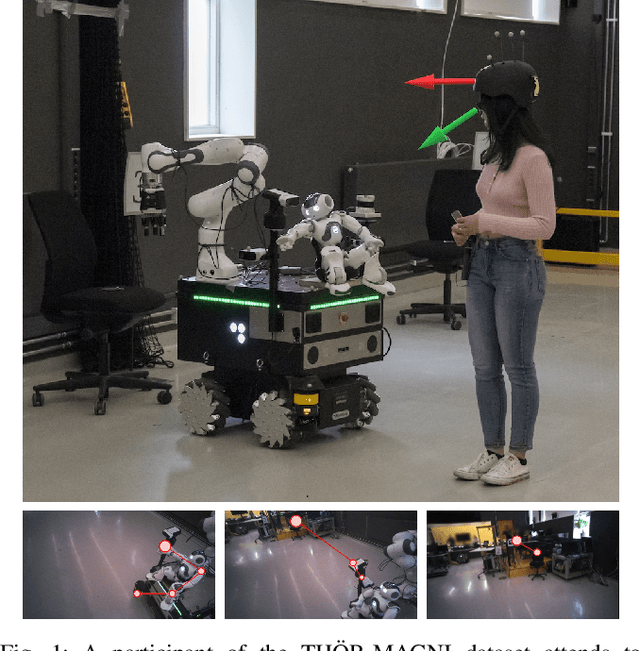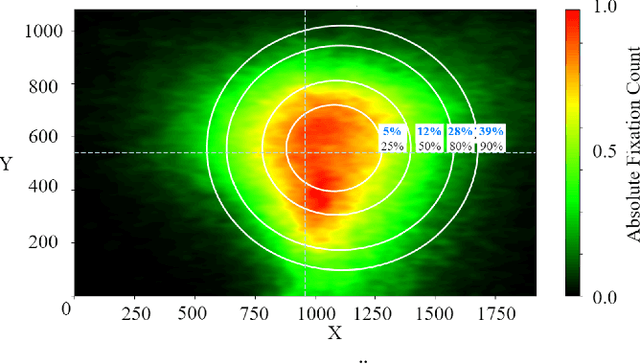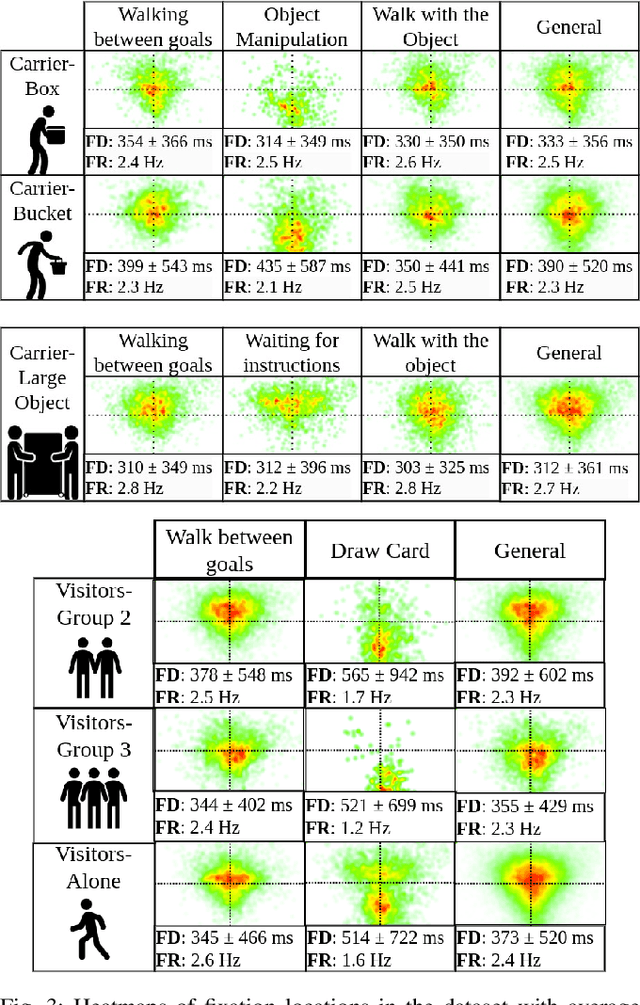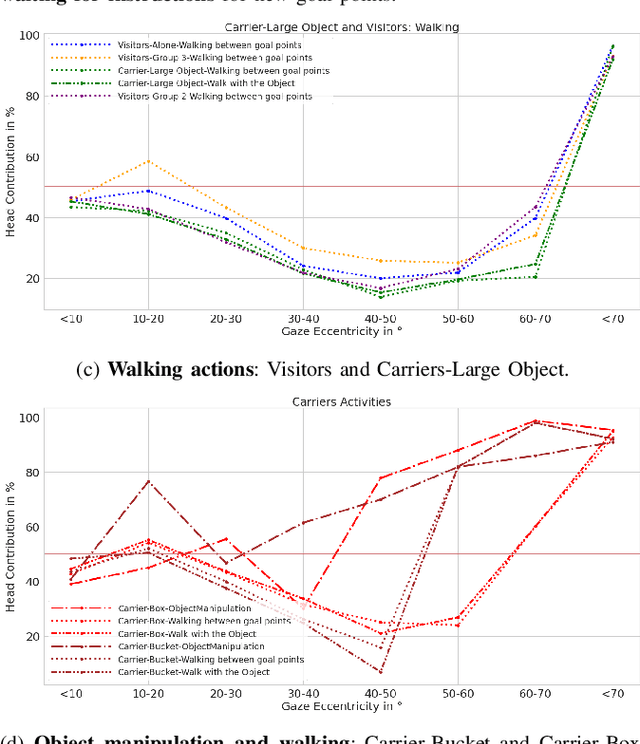Human Gaze and Head Rotation during Navigation, Exploration and Object Manipulation in Shared Environments with Robots
Paper and Code
Jun 10, 2024



The human gaze is an important cue to signal intention, attention, distraction, and the regions of interest in the immediate surroundings. Gaze tracking can transform how robots perceive, understand, and react to people, enabling new modes of robot control, interaction, and collaboration. In this paper, we use gaze tracking data from a rich dataset of human motion (TH\"OR-MAGNI) to investigate the coordination between gaze direction and head rotation of humans engaged in various indoor activities involving navigation, interaction with objects, and collaboration with a mobile robot. In particular, we study the spread and central bias of fixations in diverse activities and examine the correlation between gaze direction and head rotation. We introduce various human motion metrics to enhance the understanding of gaze behavior in dynamic interactions. Finally, we apply semantic object labeling to decompose the gaze distribution into activity-relevant regions.
 Add to Chrome
Add to Chrome Add to Firefox
Add to Firefox Add to Edge
Add to Edge